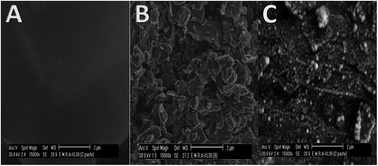A novel methionine/palladium nanoparticle modified carbon paste electrode for simultaneous determination of three antiparkinson drugs
Abstract
A simple, novel and reproducible method for the separation and simultaneous determination of entacapone (EN), levodopa (LD) and carbidopa (CD) based on a methionine/palladium nanoparticle modified carbon paste electrode (Met/Pd/CPE/SDS) prepared via the electrodeposition of palladium on a methionine/carbon paste modified electrode is described. Cyclic voltammetry (CV), differential pulse voltammetry (DPV), chronoamperometry (CA), and electrochemical impedance spectroscopy (EIS) techniques were used to characterize the properties of the sensor. Under optimum experimental conditions, the respective linear calibration range was rectilinear over the range from 2.0 × 10−8 to 0.8 × 10−3 mol L−1 with a correlation coefficient of 0.9997 for differential pulse voltammetry (DPV) in Britton–Robinson buffer at pH 2.0. The lower limit of detection (LOD) and limit of quantification (LOQ) were found to be 7.07 × 10−10 mol L−1 and 2.35 × 10−9 mol L−1, respectively. The utility of this modified electrode was demonstrated for the determination of EN in real samples.


 Please wait while we load your content...
Please wait while we load your content...